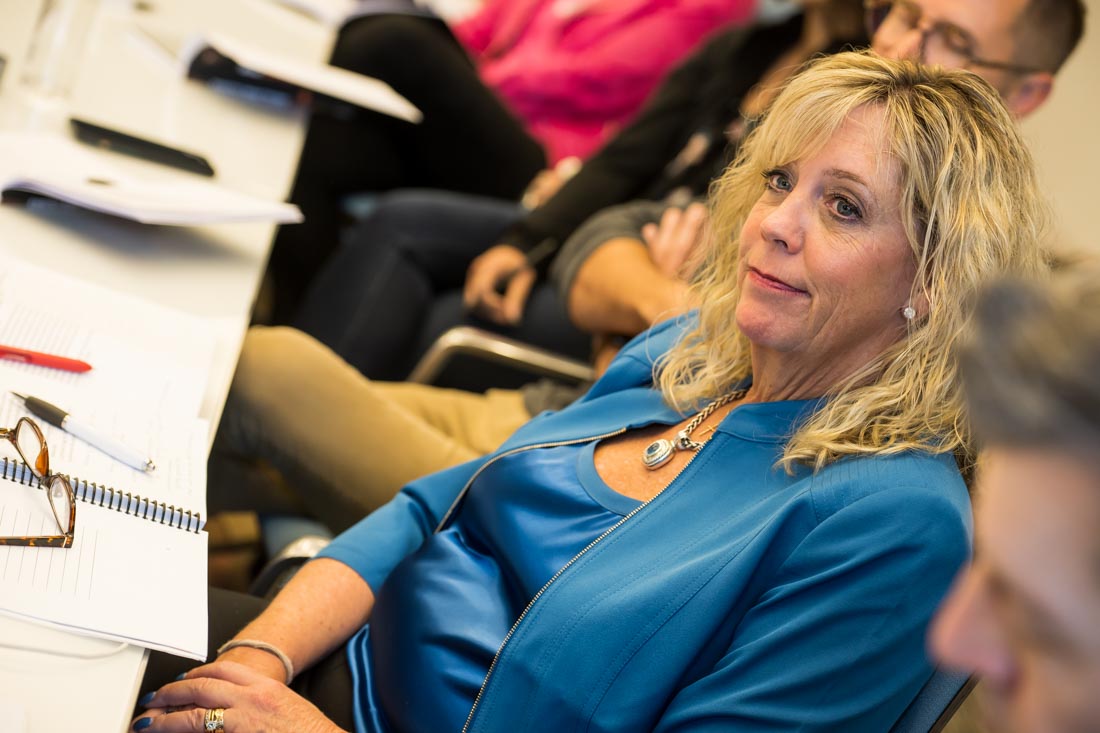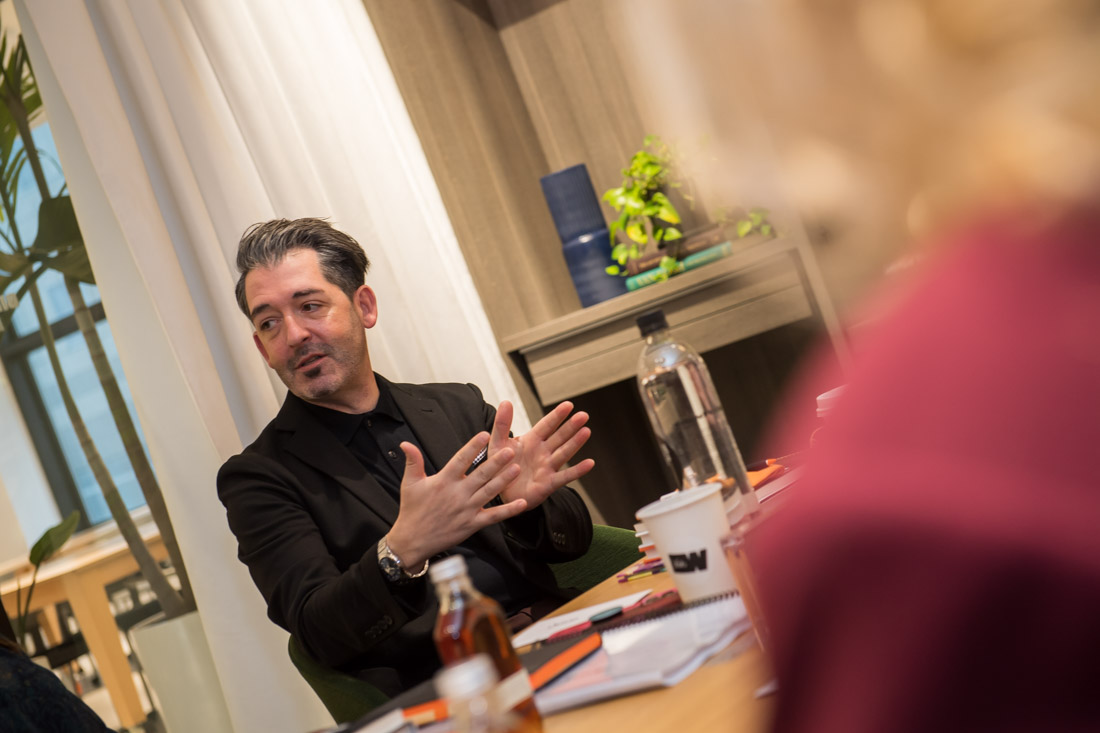EWTS Certified Guide, Kricket Harrison, works with leaders and managers of teams where change is constant. This level of changeability can be incredibly draining on team members and team leaders so her goal is to help leaders work alongside their teams to keep them motivated and performing at high levels.
In this blog, she will show you how to create an instant buy-in with new team members.
Changing Faces
Do you work in an industry that has a high level of changeability?
Teams that change regularly can happen in many industries, such as education, healthcare, hospitality, and travel.
Kricket’s background is in travel and tourism, and working in this industry has taught her a lot about how to work with and lead teams that change constantly.
Successful teams that change require a high level of trust from new interns – you want to trust that your team members know what to do and how to do it.
When it comes to swapping out pilots, for example, you need to know that they have been trained to a high standard. And the good news is that when you work for an airline, you undergo extensive recurrent training every year.
Does your organization put the same emphasis on training?
You know if your team is trained well, they will perform well. Good training means that if a new team is put together they can still perform at a high level because they know their job and they understand how to communicate with people using the same language.
There are three areas that you need to get right to ensure that you get an instant buy-in from new team members: communication, performance, and culture.
Good training means that if a new team is put together they can still perform at a high level because they know their job and they understand how to communicate with people using the same language.
Communication

Communication is vital to a team’s success. You can provide the best training and have the best onboarding. You can dot all the I’s and cross all your T’s.
But if you don’t communicate expectations, changes, or anything that differentiates from the day before or going into the day after, then it causes huge amounts of confusion and frustration for your team.
And you know what? It’s human nature to put up your defences when you’re a team member. You might hear about taking personal responsibility and encouraging people to take theirs, but when you’re put on the spot, your gut response is protection, and that protection can look like passing blame to someone else, ignoring it, or someone saying that they weren’t told.
Good communication is really the crux of this.
You can have top performance, but if you don’t have communication to support it, then it creates a toxic environment.
When a team describes a toxic environment, it often comes down to not being seen, heard, or respected.
Remember that teams that change are still teams full of human beings. These humans have different personalities and could be from different generations. They each have their own skills, and they can each bring something truly remarkable to your business. You just need to learn what that might be.
The key to good communication is to start being curious.
It can be tempting to get your new team members in and throw them in at the deep end so that they can hit the ground running.
But can you perform at your best when under these conditions?
Putting people in situations where they feel anxious and stressed won’t get the best out of your teammates.
When they first start, you’ve only really got a small amount of time to ascertain their skill level, so start by being curious.
Curiosity opens the door to possibility.
How can you do this?
With the use of an assumptive frame and by asking these types of questions you can establish the know, like, and trust factor.
You can start by asking questions framed with I bet you’re a bit like me, such as
I bet you’re a bit like me and you are in this job because you like the flexibility.
I bet you’re a bit like me, and you love this.
I bet you’re a bit like me and you love working in the neonatal unit.
Another assumptive frame is Just out of curiosity, you could ask questions such as
Just out of curiosity, have you always loved to travel?
Just out of curiosity, did you grow up in this industry?
What can you be curious about so that you learn more about the person you are working with? Who should you be asking more questions of?
During these curiosity-based questions, you should try and find out what their experience is too, and this leads on to the next section, performance.
Performance
In the perfect scenario, the performance level, expectations, and procedures would be the same across the board. This way, what you do in one area, is the known standard for what you do somewhere else.
We all know that each team modifies things for the way they work best, but what if there was something you could do to help highlight performance expectations before they even show up?
Would that help increase your performance levels?
Often, in a team that experiences constant member changes, the people are attracted to the flexibility of the position.
So it’s ironic, really, that flexibility is usually the variable that causes the chaos!
However, Kricket found that with one organization she worked with, the adoption of a welcome video quickly calmed that chaos.
Could your team benefit from something similar?
It can be a short generic one or personalized to each new member. You can pick whichever will suit your situation. It could say:
Hi (insert name) so glad you’re joining us as a team member tomorrow. Just wanted to give you a quick heads-up that in our team….
This process encourages you and your teammate to think about things ahead of time because, as is often said in the world of EWTS, the worst time to think about the thing that you are going to say, is in the moment that you are saying it.
No matter how many new team members you get, the team still has to perform and meet their goals and the company’s expectations. And this will be determined by a person’s strength.
How can you find out a person’s strengths?
It comes back to communication, so it’s time to get curious again.
You can ask the following:
Just out of curiosity, what got you into this line of work?
When was the last time you worked with…?
How certain are you about this procedure?
What is your experience with…?
Performance is a big thing for any company, and part of getting new team members to buy in is to have open communication around performance and expectations. You must be able to communicate your expectations with them for them to understand what is expected from them.
Culture
When you think about culture, this shouldn’t be in terms of geographical locations or your country of origin.
It’s the culture of being a human being.
One of the biggest challenges today is that most people tend to assume that if you look alike, are from the same area, or have the same job, you can lump them together and make assumptions about them.
But this couldn’t be further from the truth.
Assumptions like these hinder the individual from being seen, and this prevents team engagement and loyalty. So just because somebody looks alike, it doesn’t mean they have the same experience. Today’s workforce has the most diverse range of people, especially in terms of age, and there is a whole range of differences and abilities that can make a truly phenomenal team.
So what if we took a step back and tried to respect the culture among individual humans?
Where can you learn about the culture of the people on your team? What are the values that they grew up with? What are their beliefs? Their differences?
To find out more, try asking questions such as:
How would you feel if…
Would you be comfortable with…
Show Your Support
Now you’ve learned how to talk to your new team, you need to cement that buy-in, and it’s really simple to do.
Just show your support.
If there are things that your teammate is better at, allow them to do it.
If there are things that they struggle with or feel uncomfortable with, support them.
Yes, you’re leading a team, but the best leaders are also team players.
So, how can you show your support?
Think about what might help that team member feel more comfortable and offer a solution.
Would it help if… is a great question to use as a leader in this situation.
You might want to provide help, but have you ever asked the other person what that help should look like?
If you put in the time and effort with your teammates, then you are building a solid foundation.
Great team members are loyal, and loyalty doesn’t go away when things go wrong, when things get hard, or when you’re challenged.
Invest, nurture, and communicate your expectations, and you’ll manage to get that instant buy-in.
This blog is part of the EWTS Critical Conversations webinar series. Each week, a Certified Guide will share their expertise to help you be more successful both personally and professionally. To see more of our webinars, click here…











